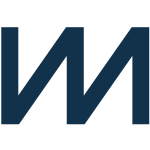About ChartMogul
ChartMogul can turn new and existing business intelligence data into valuable analytics that companies can use to improve their market performance. ChartMogul can take subscriber data - both created within ChartMogul and imported from other data sources - and generate visualized analytics for a variety of metrics that SaaS companies care about.
About Pendo
Pendo is a cloud-based software-as-a-service (SaaS) platform that integrates your application and webpage usage analytics with feedback, guidance, and communication from end-users. The solution empowers you to understand the way customers are using your product, how they feel about it, and what their experiences are like without overburdening your engineering team. Pendo provides your development team with the insights they need to dramatically improve applications, websites, and user experiences. The platform also keeps your customers informed about product enhancements and key developments as you release them.
Popular Use Cases
Bring all your ChartMogul data to Amazon Redshift
Load your ChartMogul data to Google BigQuery
ETL all your ChartMogul data to Snowflake
Move your ChartMogul data to MySQL
Bring all your Pendo data to Amazon Redshift
Load your Pendo data to Google BigQuery
ETL all your Pendo data to Snowflake
Move your Pendo data to MySQL
ChartMogul's End Points
ChartMogul Plans
Gather data about your subscription plans - like the subscription IDs, names, billing intervals, and the number of intervals that are charged at once - to evaluate the performance of each plan. This will help you better understand the effectiveness of your plans so that you can determine which ones are more or less successful as a whole.
ChartMogul Customers
Create, retrieve, or update data for new or imported customers in ChartMogul. This allows you to see important customer contact details, customer IDs, and valuable performance data including a customer’s MRR, ARR, and industry sector. You can then use that data to better segment your customers, which can provide more accurate and specific information about your business performance.
ChartMogul Invoices
Import invoice data for customers that you are tracking through ChartMogul, including customer IDs, dates of purchase, transactions, and any relevant line items. Then, use ChartMogul to create subscription data for those customers and use that data to track more specific revenue data, both in ChartMogul and in your other data sources.
ChartMogul Transactions
Track payments or refunds made on an invoice to see the transaction ID, type of transaction, transaction date, and whether or not the transaction was successful. This can help you get more accurate analytics from your invoice data. It can also indicate when there is an unusually high number of refunds, which could signal a problem worth addressing.
ChartMogul Subscriptions
Get a list of subscriptions that ChartMogul has automatically generated from invoice data. This endpoint returns several IDs - including subscription IDs, customer IDs, plan IDs, and data source IDs - that will help you to more easily track and integrate data between any of those parameters to create deeper, more accurate business analytics.
ChartMogul Tags
Use tags to track terms that are associated with a customer so that you can segment or monitor them more specifically. For example, you could tag a particular customer as “high priority,” “returning” or anything else that is relevant to your business, and then retrieve a list of customers who have been tagged with those attributes in order to analyze them as a segment.
ChartMogul Custom Attributes
Update customer data with ChartMogul custom attributes that are more specific to the needs of your company. This can include both tags as well as more complex custom attributes. Then, track those attributes in ChartMogul to get analytics that are focused on your particular business concerns.
Pendo's End Points
Pendo User Metrics
Pendo includes tools to track metrics on total web traffic, user engagement, session length, per session page views, scrolling behavior, bounce and rates, conversion figures, standard user actions, actions that lead to conversion, and more. Pendo also monitors where your traffic is coming from, how people enter your site, and at which point they leave. Then it presents the data in elegant, easy-to-understand visual reports.
Pendo User Sentiment Surveys
Pendo allows you to deploy NPS and polls directly to users in-application to produce better and more accurate results. You can target specific users based on product interactions or user characteristics to obtain the specific feedback you require. Pendo's user sentiment surveys empower you to combine survey responses with user behavior data to gain a more three-dimensional understanding of your customers. By merging quantitative and qualitative survey data, you'll gain a clearer picture of what pleases and displeases users to reveal actionable opportunities to adjust your products for improved customer conversion, increased retention, and more profitable business results.
Pendo Integrations
Pendo offers built-in ETL (extract, transform, load) connections to integrate with a wide variety of platforms such as Slack, Segment, Fivetran, Fullstory, LaunchDarkley, Google BigQuery, DOMO, Drift, Looker, Amazon Redshift, Salesforce, UserVoice, WordPress, Zapier, Zendesk, and more.
Pendo Product Improvement Roadmapping
Pendo includes tools to coordinate your team around a central planning roadmap informed by the metrics and insights the platform generates. Roadmapping features include the ability to visualize your product development strategy and organize your plans around product enhancements, timeline, team, and market segment. You can also manage which teams can access different views of the plan, and streamline views for stakeholders so they're overload with information. Pendo's drag-and-drop functionality empowers non-tech-savvy users to create and manage roadmaps.








